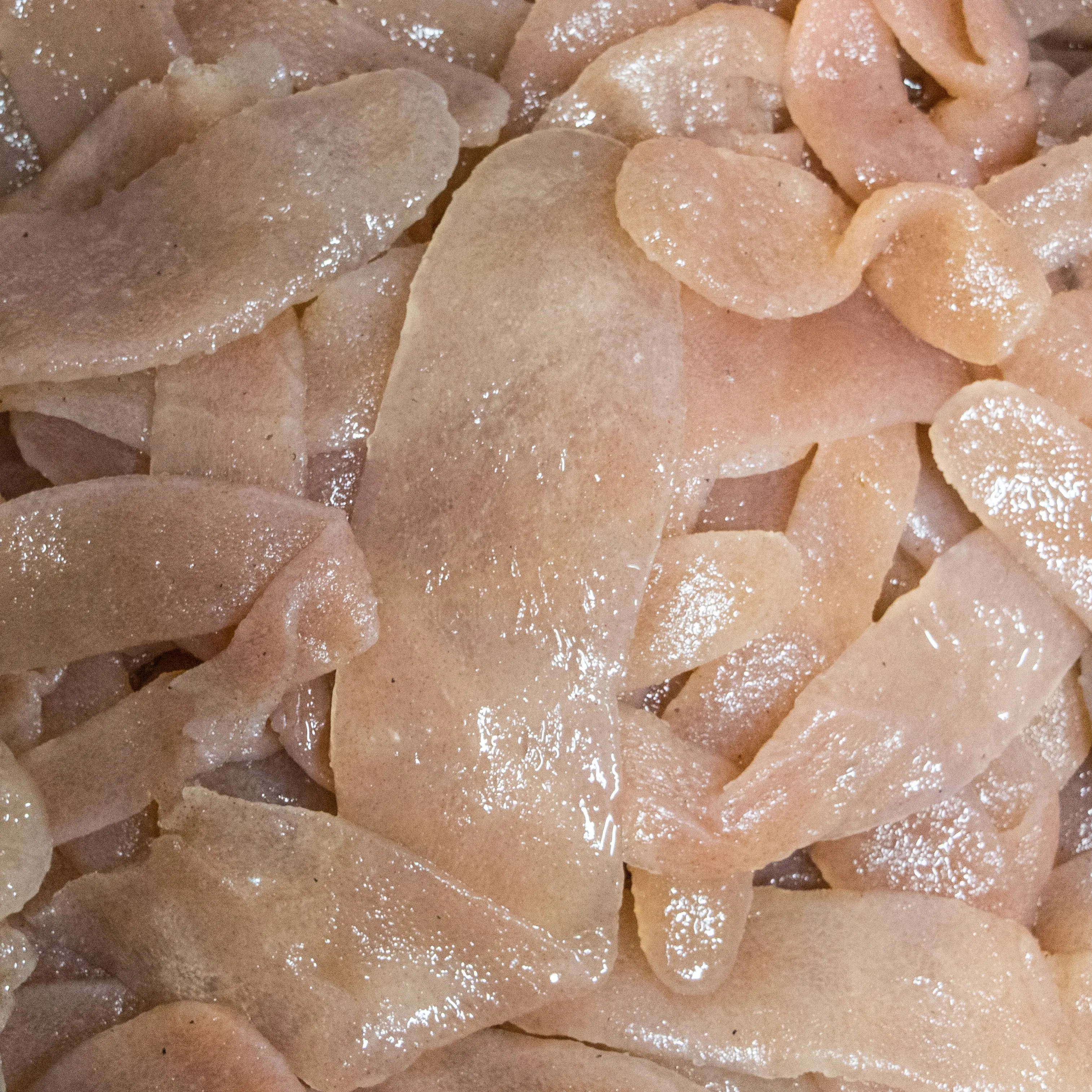Pyrosomes
Immortal super-organisms made up of gelatinous fire clones
Pyrosomes, so many pyrosomes. This was the result of several of our more southern mesopelagic trawls, when the free-floating colonial tunicates (Pyrosoma atlanticum) swamped our net. Pyrosomes are closely related to salps, jellylike barrel-shaped organisms which were the focus of Tangaroa’s SalpPOOP voyage in 2018. We had two other BLAKE Ambassadors on that voyage- check out their blogs here.
While at the surface, pyrosomes look like hollow, translucent pink socks, in the water they are something else entirely, blazing with blue-green bioluminescence. Their genus name, Pyrosoma, can be literally translated from Greek as ‘fire body’.
Right: A fish bin full of pyrosomes.

Above: I collect pyrosomes from a mesopelagic trawl.
Thousands of these cloned fire bodies (known as zooids, each with their own light organ) make up one practically immortal super-organism, which ranges in size from a relatively small sock to a massive cylinder wide enough for a person to enter. The theoretical immortality comes from the fact that individual zooids can reproduce via asexual reproduction, making a copy of themselves. This means that if parts of the colony are damaged or broken apart, they can be regenerated. Only if every single zooid is killed simultaneously will the colony die.
Pyrosomes filter feed, with each zooid sieving out plankton from the water. In the finest example of effective multitasking, they eject the leftover water into the hollow inside of their cylinder and eventually expel it from the back of the colony, and this water propulsion is how the colony moves. Why have separate methods for feeding and movement when you can do both at once?

Above: A pyrosome up close.


